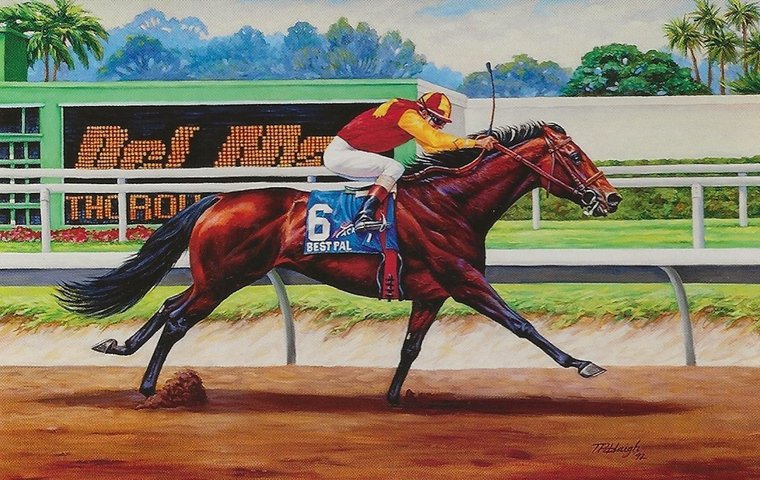
America’s foremost racing writer continues his unmissable series with memories of a hugely popular performer who dominated the first half of the 1990s in California
How’s this for a Grade 1 stable starter kit?
In stall number one, a two-year-old gelding who beats up on pricey colts with regularity in the richest events on the circuit. Next to him lives a three-year-old good enough to finish second in the Kentucky Derby, who then blossoms to defeat the deepest field of older horses during his summer campaign.
Continuing down the shedrow, here is a four-year-old who towers over his competition through the first half of the year, winning major races in the American West and Midwest during a Golden Age of class acts on the main track. His neighbor, nuzzling his hayrack, is a fully mature five-year-old, oblivious to the scars of time while winning his fifth major event at a mile and one-quarter.
And do not sell short that six-year-old, imperious and pampered, who can still rise to either win when he can or make the opposition run their best to beat him. Not a bad bunch, right? Easy to feed, too, because they are all the same horse – the Thoroughbred called Best Pal.
Before he became an institution, Best Pal was a surprise. Bred in Southern California near the inland town of Ramona – instead of the fashionable Santa Ynez region or the verdant Central Valley – Best Pal represented the height of lowered expectations.
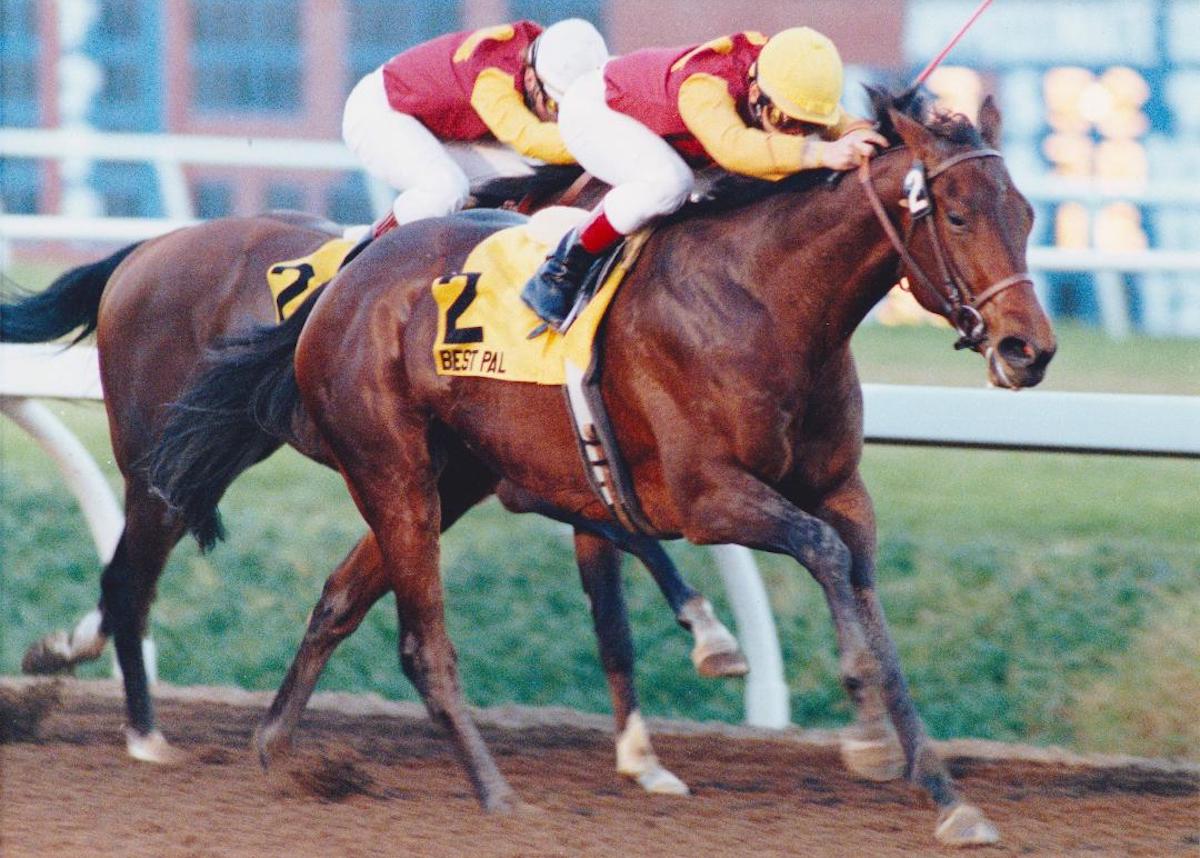
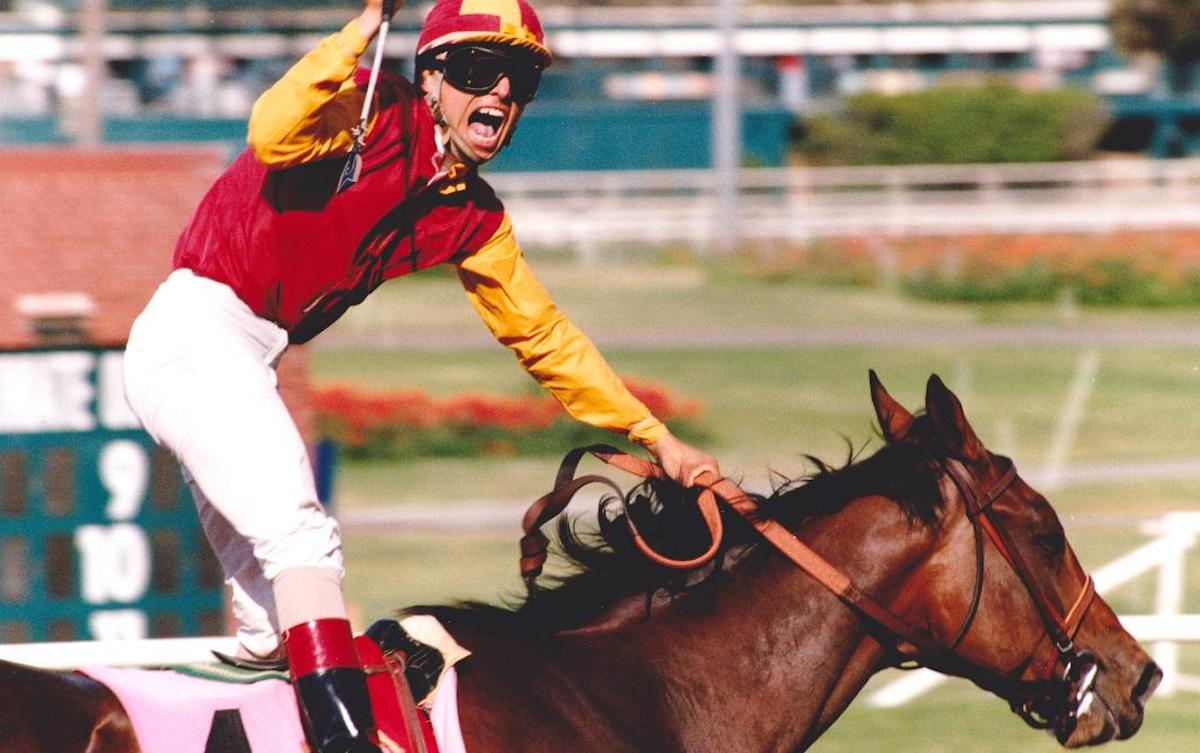
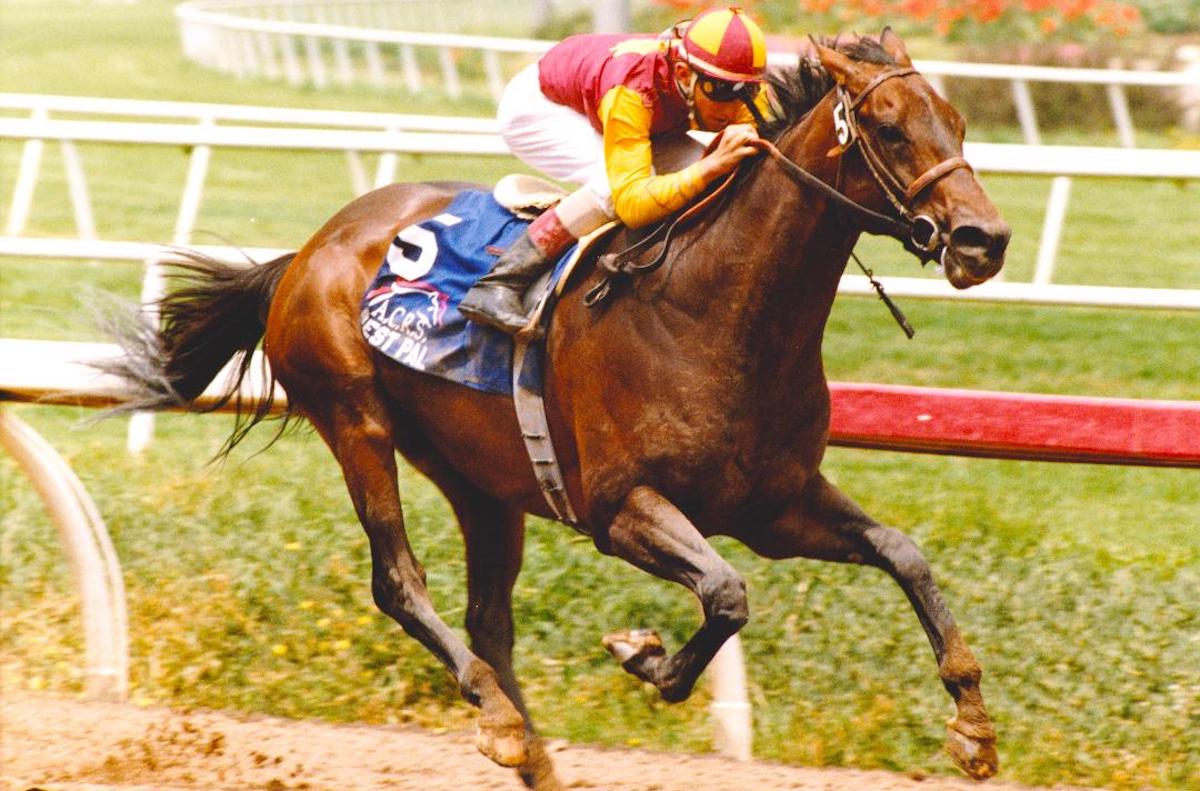
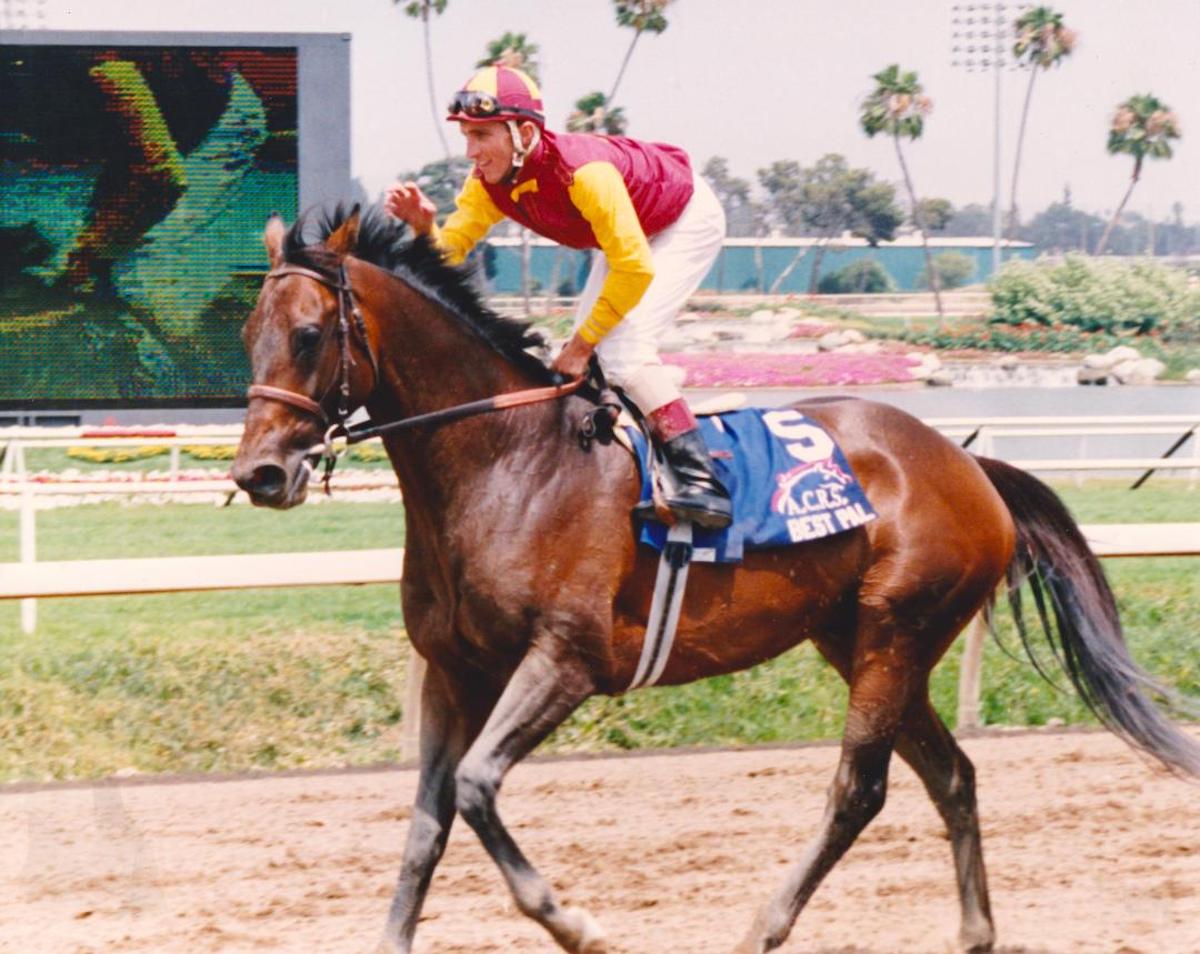 He was gelded young and tossed to a trainer with a name longer than his list of accomplishments.
He was gelded young and tossed to a trainer with a name longer than his list of accomplishments.
Going forth as a darkish bay with black leggings, mane and tail, he was unmarked except for a small, crescent-shaped scar between his eyes, the result of an argument with his stall late one night in a fit of youthful exuberance.
John Mabee, who made a fortune in a chain of grocery markets before branching into insurance and banking, was on his way to adding a Thoroughbred empire by the late 1980s, with an emphasis on breeding, selling, and racing world-class racehorses.
Flagship horse
Best Pal was not part of the plan, but he became the Mabee flagship horse, flaunting the burgundy and gold Golden Eagle stable colors at the highest levels for so long that a major race without Best Pal became something less that it should have been. He dominated the first half of the 1990s in California, more popular than any horse since the days of John Henry.
Although Best Pal’s pedigree was replete with name-brand stallions, he descended from one of those female families that simmers for decades before coming to any kind of boil.
A generous search through the 20th century reveals only unraced or winless matrons that produced nothing of note until the nine-year-old Gray Phantom mare Udontmeanit was bred to the seven-year-old Sadair stallion Sir Wiggle, a stakes winner at two, in 1974.
The resulting filly, playfully named Ubetido, was a key player at Hollywood Park during the summer of 1977 when she placed in three stakes, including the Hollywood Lassie.
Ubetido raced on without distinction for another California season, finally claimed out of a Del Mar race by Mabee for their growing broodmare band at Golden Eagle Farm.
In 1979 Ubetido was bred to King Pellinore, the 1975 Irish Derby and English St Leger runner-up for Vincent O’Brien, who came to California with great fanfare in a package deal with Irish St Leger winner Caucasus.
Between the two of them, while trained in the US by Charlie Whittingham, King Pellinore and Caucasus won nine graded stakes before going to work at Fred Sahadi’s Cardiff Stud Farm.
Keeping with the theme, Ubetido’s King Pellinore foal was named Ubetshedid, who made one start for the Mabees and trainer Mel Stute, and that was that. She produced one modest winner among her first three foals, then came number four, a colt by the talented Habitony, winner of the 1977 Santa Anita Derby.
Habitony was by Habitat, a son of Sir Gaylord and half-brother to Northfields, winner of Derbies in Louisiana and at Hawthorne Race Course.
Timeform topper
Racing in Europe for Charles Engelhard, Habitat won the Lockinge Stakes and Prix du Moulin, retiring with a 134 Timeform rating that topped the 1969 charts, and commenced his stud career in Ireland. Habitony was foaled there, but was imported to California as a two-year-old, where he thrived for the expat Irish trainer, Tommy Doyle.
The Habitony-Ubetshedid colt arrived at Golden Eagle Farm on Feb. 12, 1988. Sharing the date with Abraham Lincoln is nothing more than a happy coincidence, although if there ever was a word to describe Best Pal, ‘honest’ would top the list.
Best Pal was gelded befo re he started and he started early on, coming out to win at five furlongs on May 18, 1990, at Hollywood Park. His trainer was Ian Jory – Ian Philip Dunstan Jory to be precise – 32 at the time and fresh from running a longshot to finish fourth in the Kentucky Derby.
re he started and he started early on, coming out to win at five furlongs on May 18, 1990, at Hollywood Park. His trainer was Ian Jory – Ian Philip Dunstan Jory to be precise – 32 at the time and fresh from running a longshot to finish fourth in the Kentucky Derby.
Jory (left) had worked for Sir Mark Prescott and Jeremy Hindley in his native England and for John Gosden in California before going out on his own, which is a wordy way of saying that he knew a good horse when he saw one.
“He was a very neat horse, and he wasn’t very hard to train,” Jory said of the two-year-old Best Pal. “He just went about his business. He was the kind of horse you didn’t need to show anything twice.”
Jory went on to train a number of stakes winners, but he always will be known as the man who first handled Best Pal.
‘I was lucky to have him’
“I was lucky to have him,” Jory said. “I recall being at the Derby that year and knowing I had what I thought was a pretty good two-year-old back home.”
That summer, it was Best Pal’s seven-length romp in the restricted I’m Smokin Stakes for California-breds at Del Mar that put everyone on notice. He went on to sweep the remaining major stakes out West for the two-year-old division, with the only blot on his record a poor effort in the Breeders’ Cup Juvenile at Belmont Park, over a track he clearly did not enjoy.
Best Pal opened his three-year-old season with two close seconds in top local company.
“I was a bit disappointed in those results, but I know I was concerned about squeezing too much blood out of the stone too early,” Jory said. “Getting to Kentucky was the point, and by the time we got there, I didn’t think he could lose.”
But he lost, finishing second to Strike the Gold by a length and three-quarters after a spot of trouble entering the stretch. The winner made his run down the center of the Churchill Downs course, affording Best Pal and jockey Gary Stevens no chance to engage.
Stevens assured Jory his horse ran a winning race, in spite of the numbers on the board. “He probably should have won the Derby,” Jory said. “But that’s racing.”
Best Pal still was ranked among the top three-year-olds in the land, and Jory was fully exposed as a promising young horseman. Given the pressure accompanying such a high-profile Thoroughbred, however, Jory suspected his time with Best Pal was ticking down. After the horse had a dull Preakness and then a narrow loss back in California in the Silver Screen, Mabee switched Best Pal to veteran trainer Gary Jones.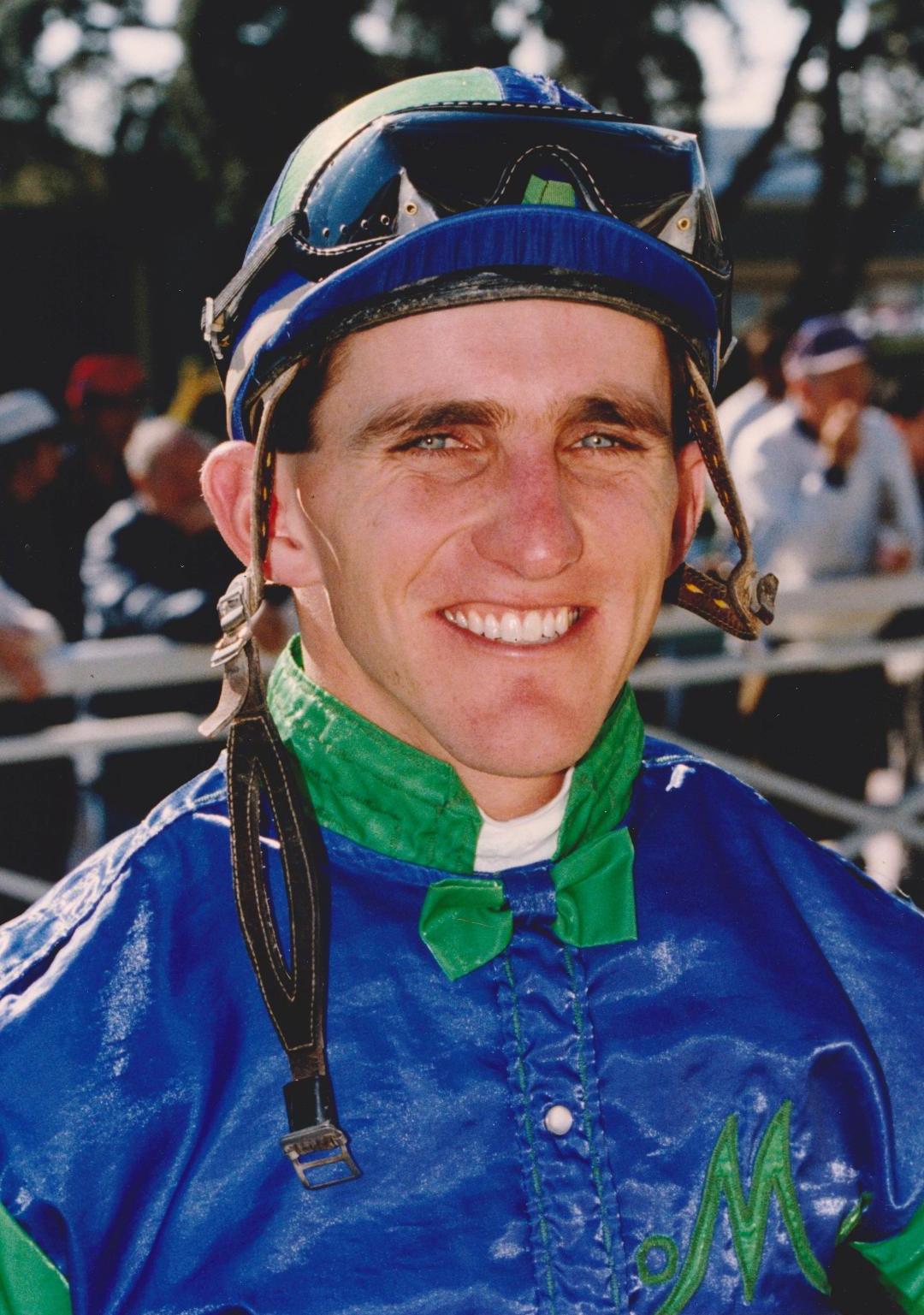
“I was pretty bitter about losing him,” Jory said. “But I was fortunate to be given a couple of horses for the Mabees in the first place, and I was proud of what I accomplished with Best Pal.”
As far as that goes, Best Pal played no favorites. He punched the clock for three different trainers over parts of six seasons and tolerated the presence of six different riders besides Stevens, including Pat Valenzuela, Ron Hansen, Jose Santos, Kent Desormeaux, Corey Black (right), and, for his final 13 starts, Chris McCarron. He made them all look good.
Black was a young veteran of 24 when he was called upon by Gary Jones to ride Best Pal for the first time in the Hollywood Turf Handicap on Memorial Day 1993. They finished a strong second at the end of the mile and a quarter to Bien Bien, one of the nation’s top grass performers, who set a course record of 1:57⅗.
“He was a machine,” Black said of Best Pal. “He was the best gate horse I ever rode. He’d go in, head straight forward, square on all fours, and he looked down the ‘V’ of the gate and never flinched.
Never gave anything away
“Then, because he always broke square, he never got pinched or squeezed from either side. He might not have been the fastest horse away from there, but he never gave anything away by making a mistake.”
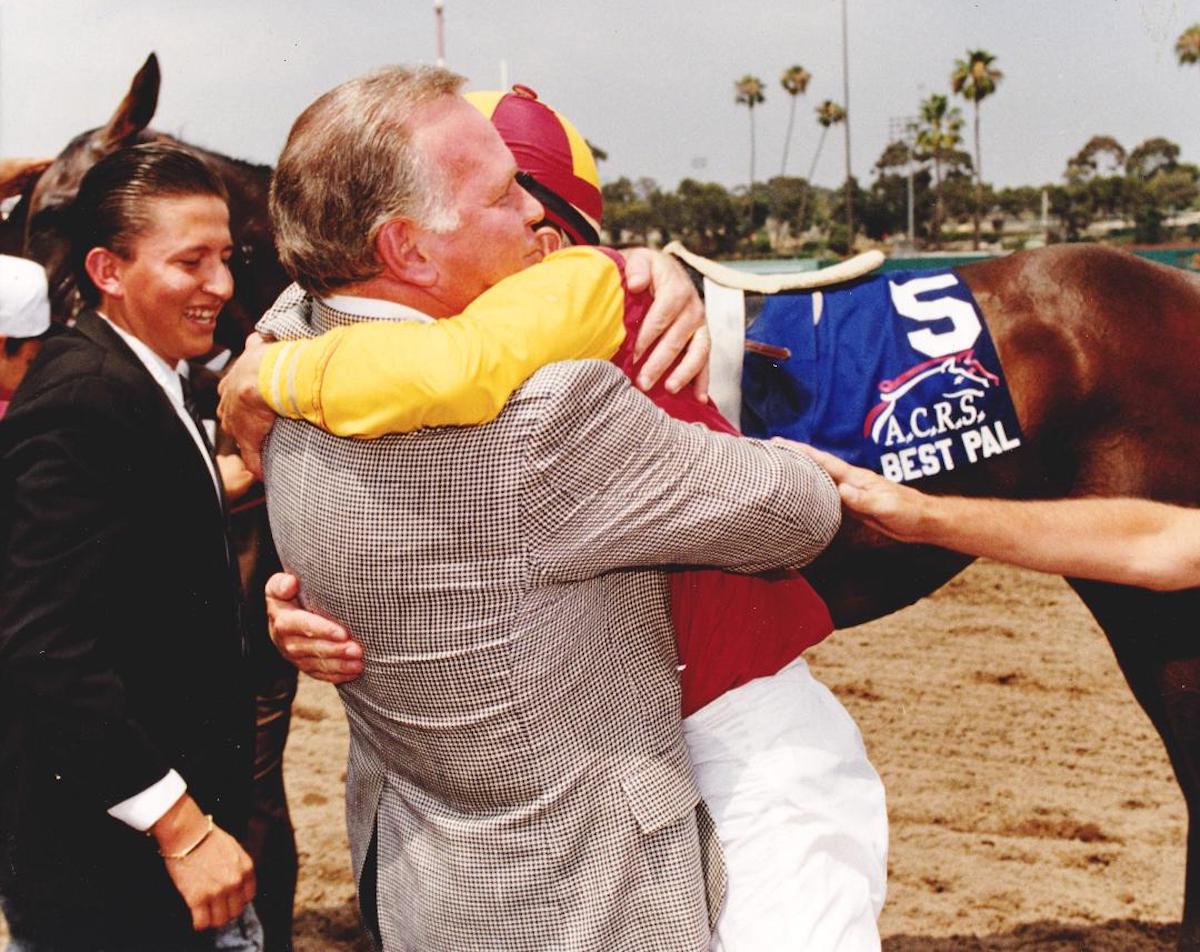 Even in his youth, Black was no stranger to top horses. Before Best Pal came along, he had won the Ramona and Vanity Handicaps on Annoconnor for Gosden, the Charlies H. Strub Stakes and Jockey Club Gold Cup on Flying Continental for Jay Robbins, and the Hong Kong International Bowl on Glen Kate for Bill Shoemaker. Weight struggles forced Black to end his career as a jockey in 2000 at age 31 with 1,519 winners.
Even in his youth, Black was no stranger to top horses. Before Best Pal came along, he had won the Ramona and Vanity Handicaps on Annoconnor for Gosden, the Charlies H. Strub Stakes and Jockey Club Gold Cup on Flying Continental for Jay Robbins, and the Hong Kong International Bowl on Glen Kate for Bill Shoemaker. Weight struggles forced Black to end his career as a jockey in 2000 at age 31 with 1,519 winners.
“Best Pal wasn’t more than 16 hands, but he had the biggest girth of any horse I ever rode,” Black said. “I had to have extra large girths for him, which makes sense when they found he had an extra large heart after he died.”
Striking while their form was hot, Best Pal and Black came right back after the Hollywood Turf to win the Hollywood Gold Cup. It was a powerful, 2½-length score over Bertrando, to whom Best Pal was conceding weight. Bertrando went on to earn championship honors as the season’s top older horse.
‘Best I ever rode’
“He was the best horse I ever rode,” Black said, “and he was probably the best horse who never won an Eclipse Award. Across those first five years he ran, he was the best horse in North America.”
The 1993 Gold Cup completed a sweep for Best Pal of the major mile-and-a-quarter events in California, following the Swaps Stakes, Pacific Classic, Charles H. Strub Stakes, and the Santa Anita Handicap. It was the inaugural running of the Pacific Classic in1991 at Del Mar, however, that supercharged Best Pal’s adoration by the racing public.
“Here was a horse owned and trained by Californians, born right here in San Diego County, coming back to Del Mar after winning the Futurity here the previous year,” said Del Mar president Joe Harper. “It’s no wonder he became such a favorite of our fans. And he delivered.”
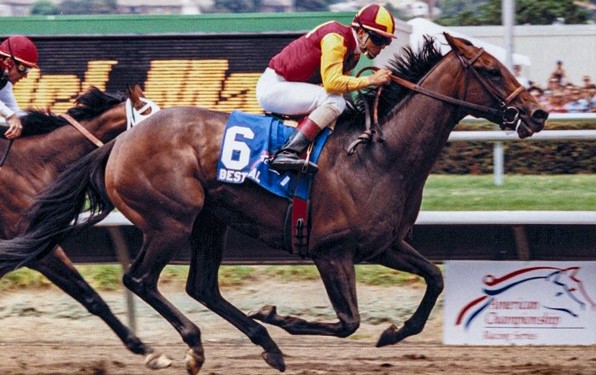 Little wonder, then, that he was named California Horse of the Year three times, in 1990, 1991 and 1992, nor that he is remembered annually in a G3 stakes for juveniles at Del Mar.
Little wonder, then, that he was named California Horse of the Year three times, in 1990, 1991 and 1992, nor that he is remembered annually in a G3 stakes for juveniles at Del Mar.
Most thrilling moment
Of all Best Pal’s races, the Pacific Classic, the signature race at his favorite venue, lingers as his most thrilling moment. The field of older runners included 1990 Derby winner Unbridled, reigning Santa Anita Handicap winner Farma Way, and the very much in-form San Diego Handicap winner Twilight Agenda, who later finished second in the Breeders’ Cup Classic.
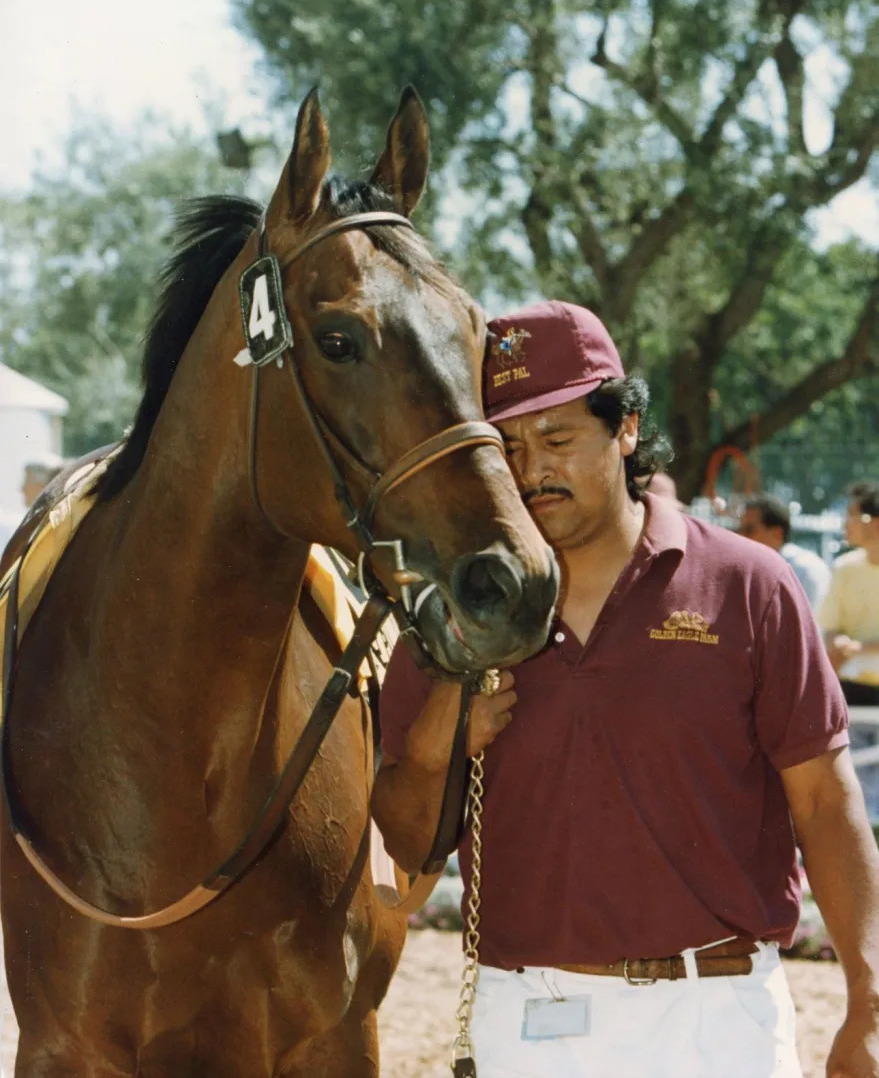 After pulling away from stubborn Twilight Agenda to win by a length, Best Pal and Valenzuela were swarmed by the crew of the Jones barn and treated to a prolonged ovation from the crowd of more than 28,000. Later, back at the stables, cold beer flowed for anyone who happened by, including John Mabee himself.
After pulling away from stubborn Twilight Agenda to win by a length, Best Pal and Valenzuela were swarmed by the crew of the Jones barn and treated to a prolonged ovation from the crowd of more than 28,000. Later, back at the stables, cold beer flowed for anyone who happened by, including John Mabee himself.
In his first 31 starts through the end of his five-year-old campaign, Best Pal won 14 races and finished second or third in 11 others. He was a big game player in the truest sense, usually at his peak when the stakes were high.
Like all the great geldings of the 20th century – Kelso, Forego, Fort Marcy – Best Pal raced a lot and lost his share without serious harm to his reputation. Their place was in public, putting their ability on the line and winning the ultimate test of time.
Gary Jones and the Mabees parted ways in March 1994 over an issue, they all said, that had nothing to do with Best Pal. Unfazed, Best Pal made the short walk down the Santa Anita backstretch road to the stable of Richard Mandella, who had just finished training Kotashaan, the 1993 Horse of the Year.
Great racehorse
“I knew I was getting him after he’d already established himself as a great racehorse,” Mandella said. “But I thought he still had some good races in him, and it was an honor just to have him in the barn. He was like one of those people who wouldn’t let you get close, but you knew he liked you anyway.”
At ages six and seven, Best Pal just missed winning a second Santa Anita Handicap and a second Pacific Classic. He celebrated his seventh birthday on Feb. 12, 1995, by winning the San Antonio Handicap at Santa Anita, defeating Hollywood Gold Cup winner Slew of Damascus by three lengths. His lifetime bankroll had reached $5m, and was still climbing. (At $5.67m, he held the prize-money record for a Cal-bred when he retired.)
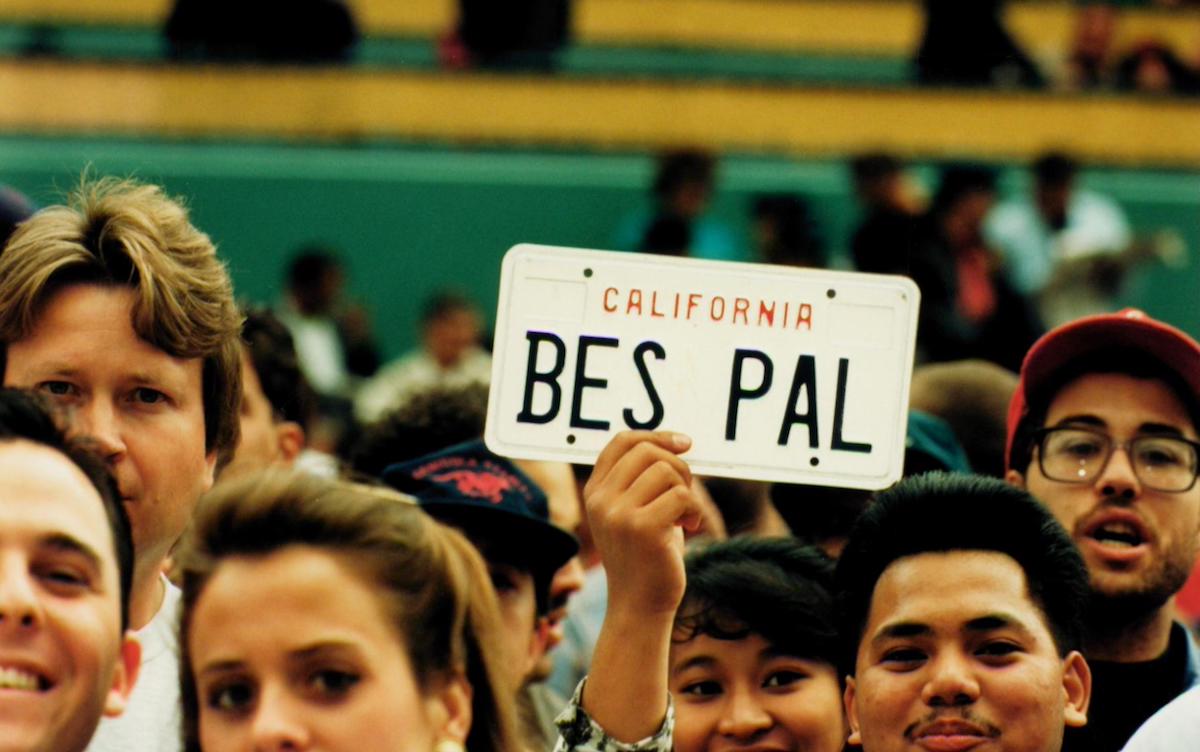 But in January 1996, Best Pal went through the motions in the San Pasqual Handicap – his 47th start – a clear indication that the old fire had died. At the insistence of the Mabees, he was retired to a life of leisure at their farm, accompanied by a well-funded living trust. They were certain their shining star would outlive his owners.
But in January 1996, Best Pal went through the motions in the San Pasqual Handicap – his 47th start – a clear indication that the old fire had died. At the insistence of the Mabees, he was retired to a life of leisure at their farm, accompanied by a well-funded living trust. They were certain their shining star would outlive his owners.
Soon, it became clear that Best Pal was not interested in slippers and a pipe. The farm staff surrendered and put the old boy to work accompanying young horses to the Golden Eagle training track.
That summer of 1996, Best Pal appeared at Del Mar in a ceremonial role to lead the post parade for the Pacific Classic. For the crowd of more than 44,000, their hometown hero nearly upstaged Cigar, who was going for his 17th straight victory. As it happened, that was also the day Mandella beat Cigar with Dare And Go, Best Pal’s former stablemate.
On the morning of Nov. 24, 1998, Best Pal was escorting a set of young hopefuls to the Golden Eagle training track when he suddenly stopped, dropped to his knees, and died of a cardiac arrest. He was only 10.
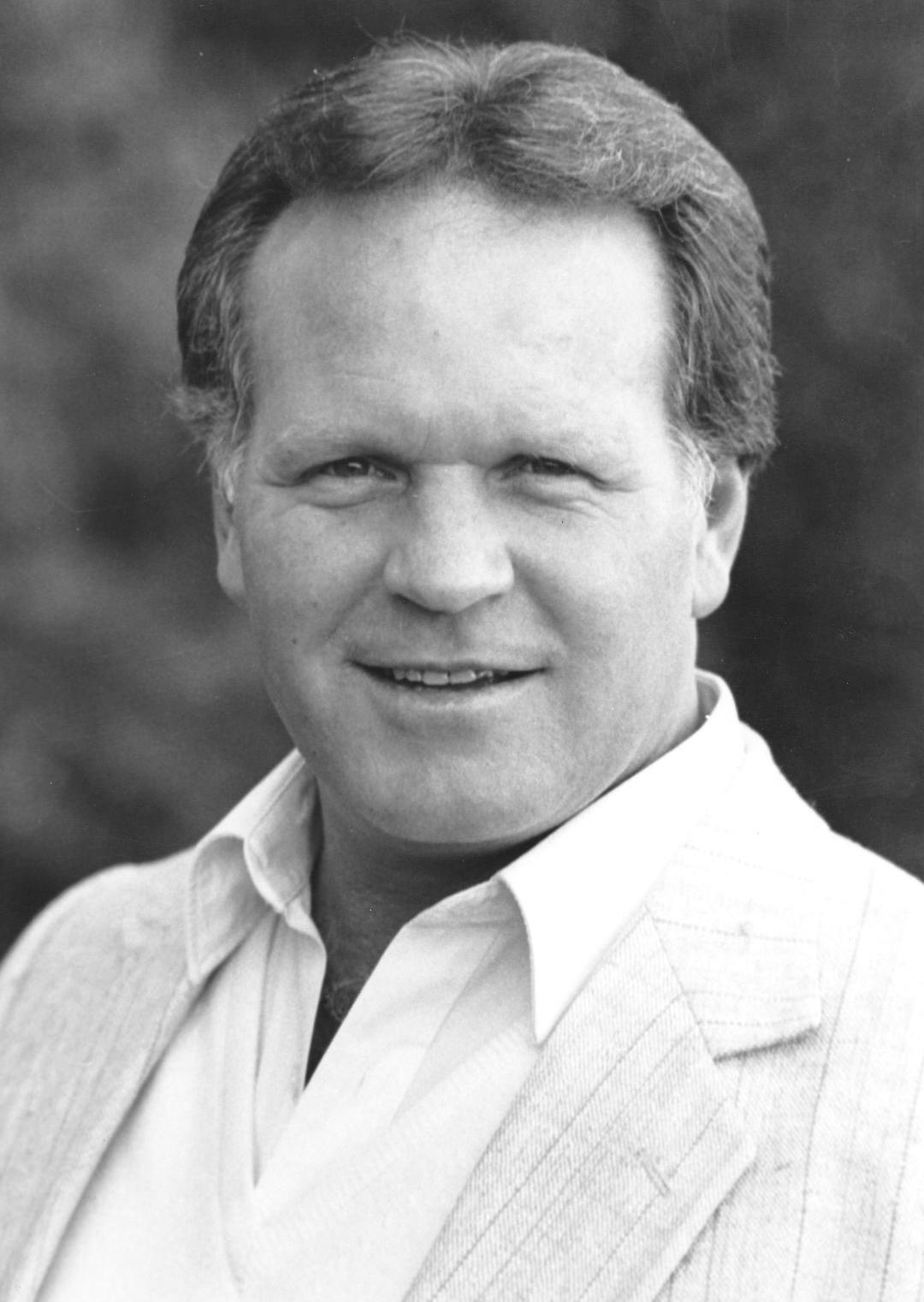 Part of the family
Part of the family
“It’s like losing part of the family,” said Gary Jones (right) when he heard the news. “He was my main man. The best I ever had. He lived a full life, but I thought he had a lot of years left.”
In a memorial gathering attended by some 300 fans and family, Best Pal’s remains were buried at the farm, with one of Ramona’s huge native stones marking the grave. Habitony, who died at Golden Eagle in 2001, was buried alongside his most famous son, as was Ubetshedid, who died two years later.
John Mabee died aged 80 in 2002 and Betty Mabee passed away in 2010, still operating the Golden Eagle racing and breeding interests. That same year, Best Pal was elected to the Thoroughbred Racing Hall of Fame, joining fellow California-breds Swaps, Native Diver, Ancient Title, Tiznow and Emperor Of Norfolk.
The Best Pal inner circle was further reduced in October 2020 with the death of Jones, at 76, after a long illness. In 2014, Jones had joined fellow Best Pal alumnus Richard Mandella in the Hall of Fame.
As for Ian Jory, the trainer who ushered Best Pal into elite competition, he retired from training in 2008 and spent the next few years in equine transport. In 2011, he lost his right leg from just above the knee to a pair of rare malignant tumors, after which he emigrated with his family to the east coast of New Zealand’s north island.
He is retired now, actively so with a trusty prosthetic, his days filled by golf, hiking, and as a volunteer radio dispatcher for the New Zealand Coast Guard.
“I haven’t been involved in the game for years, although I’ll speak with mates back in England from time to time,” Jory said. “Otherwise, I rarely think about racing. But when I do, it’s always Best Pal who comes first to mind.”
* Photography note: all Stidham / Hollywood Park images provided Edward Kip Hannan & Roberta Weiser
• Read all Jay Hovdey's features in his Favorite Racehorses series
Hill Rise: ‘He is why I’m here, still writing about horses half a century after he was born’
Smarty Jones: ‘You know, this is America’s horse!’
View the latest TRC Global Rankings for horses / jockeys / trainers / sires


